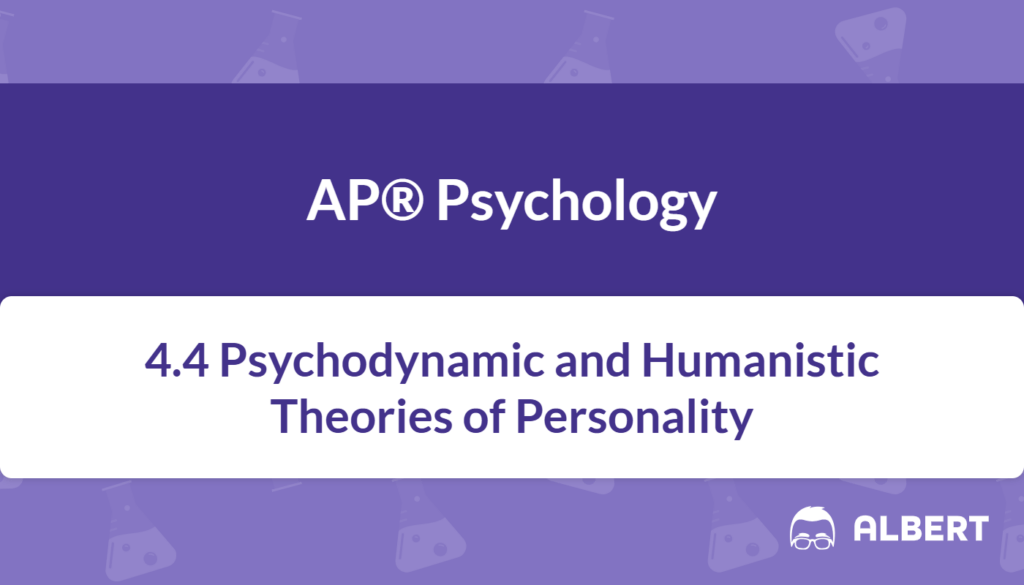What We Review
Introduction
Personality theories help explain why individuals think, feel, and behave in unique ways. In humanistic psychology, the emphasis is on conscious thought, personal growth, and the drive for self-improvement. Unlike perspectives that focus on unconscious motives or external traits, humanistic theory celebrates free will, inner strength, and the belief that people are inherently good and capable of reaching their full potential.
This article focuses solely on the humanistic theory of personality, covering its core ideas, main theorists, practical applications, and sample scenarios to help AP® Psychology students understand its relevance.
What Is Humanistic Psychology?
Humanistic psychology emerged in the mid-20th century as a response to the limitations of both psychodynamic and behaviorist approaches. Instead of focusing on pathology or unconscious conflict, humanistic psychologists focus on the whole person and their journey toward self-growth and fulfillment.
- Definition: Humanistic psychology is the psychological perspective that emphasizes conscious experience, personal freedom, and the inherent drive to become the best version of oneself.
Major Figures in Humanistic Psychology
Carl Rogers
- Developed client-centered therapy, emphasizing empathy, active listening, and creating a nonjudgmental environment.
- Believed that growth occurs best when individuals are accepted as they are.
Abraham Maslow
- Known for the hierarchy of needs, which leads up to self-actualization at the top.
- Studied individuals who were considered self-actualized (e.g., Albert Einstein, Eleanor Roosevelt).
While Maslow’s full theory is beyond the scope of the AP® Psychology exam, the idea of self-actualization is central to understanding humanistic theory.
Key Concepts in Humanistic Theory
1. Self-Actualizing Tendency
According to humanistic theorists, every individual has an innate drive to grow, improve, and reach their fullest potential. This process is known as self-actualization.
Example
A high school student passionate about music spends weekends composing and recording. Over time, they gain confidence and seek out performance opportunities—not because someone forces them to, but because it fulfills them.
Step-by-Step Breakdown:
- Identify a personal passion (e.g., art, writing, sports).
- Create goals that reflect that passion.
- Receive encouragement and support.
- Notice feelings of satisfaction and progress.
- Experience increased motivation and personal fulfillment.
2. Unconditional Positive Regard
Carl Rogers, a key figure in humanistic psychology, believed that people flourish when they receive unconditional positive regard—support and acceptance without judgment.

Example
A teenager shares feelings of anxiety and failure with a trusted adult. Rather than criticize, the adult listens with empathy and acceptance, encouraging the teen to reflect and grow.
Practice Example:
- A student is nervous about making mistakes in class.
- The teacher reassures them that mistakes are part of learning.
- This safe, supportive environment encourages the student to participate more.
- Over time, the student’s confidence improves.
3. Self-Concept and the Ideal Self
In humanistic theory, personality is shaped by how closely a person’s self-concept matches their ideal self and who they want to become.
A student who sees themselves as a “good writer” and wants to become a published author experiences satisfaction when receiving praise or publishing their work. If there’s a large gap between how they see themselves and their goals, they may feel distressed.
Assessing Personality in Humanistic Psychology
Humanistic psychologists assess personality by looking at a person’s sense of self, level of self-acceptance, and progress toward personal goals. They avoid labeling or categorizing people.
Techniques Include:
- Self-Evaluation Exercises: Help individuals reflect on how closely they are living in alignment with their ideal selves.
- Client-Centered Therapy: Encourages individuals to lead the conversation in a safe space with genuine support.
Real-World Applications
Humanistic ideas are often used in education, therapy, and leadership.
Example: Humanistic Approach in the Classroom
A teacher focuses on encouraging effort and providing support rather than punishment or comparison.
Step-by-Step Classroom Strategy:
- Offer students meaningful feedback without criticism.
- Accept all student contributions in discussions.
- Encourage students to set personal learning goals.
- Promote a growth mindset and celebrate small wins.
Result: Students feel more motivated, engaged, and valued.
Practice Problem
Problem: A teacher wants to help students build a stronger sense of self-worth. How might they apply humanistic theory?
Solution Steps:
- Recognize that humanistic theory emphasizes acceptance and growth.
- Recall the importance of unconditional positive regard.
- Encourage students to share their thoughts and goals without fear of judgment.
- Provide consistent, supportive feedback.
- Conclude that this approach helps students feel respected and motivated to grow.
Quick Reference Vocabulary Chart
Below is a handy chart of important terms and definitions:
| Term | Definition |
| Humanistic Psychology | Study of the whole person, emphasizing conscious growth and self-awareness. |
| Humanistic Psychology Focus | Concentration on self-actualizing tendency and unconditional positive regard. |
| Unconditional Positive Regard | Accepting and supporting a person without conditions or judgment. |
| Self-Actualizing Tendency | Innate drive toward fulfilling one’s maximum potential. |
| Client-Centered Therapy | Therapeutic practice using empathy, acceptance, and genuine communication. |
| Ideal Self | The version of oneself a person aspires to become. |
Conclusion
The humanistic theory of personality provides a hopeful and empowering view of human nature. It suggests that people are driven by a desire to grow, to understand themselves, and to become their best selves, especially when they are supported with empathy and acceptance.
In the context of AP® Psychology, understanding humanistic theory helps students grasp the importance of free will, personal goals, and positive environments in shaping behavior and personality. Whether in therapy, school, or everyday life, humanistic ideas remind us of the potential for growth in everyone.
Sharpen Your Skills for AP® Psychology
Are you preparing for the AP® Psychology test? We’ve got you covered! Try our review articles designed to help you confidently tackle real-world AP® Psychology problems. You’ll find everything you need to succeed, from quick tips to detailed strategies. Start exploring now!
- Psychodynamic Psychology: AP® Psychology Review
- Social Cognitive Theory: AP® Psychology Review
- Trait Theory of Personality: AP® Psychology Review
Need help preparing for your AP® Psychology exam?
Albert has hundreds of AP® Psychology practice questions, free response, and full-length practice tests to try out.








